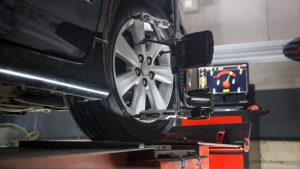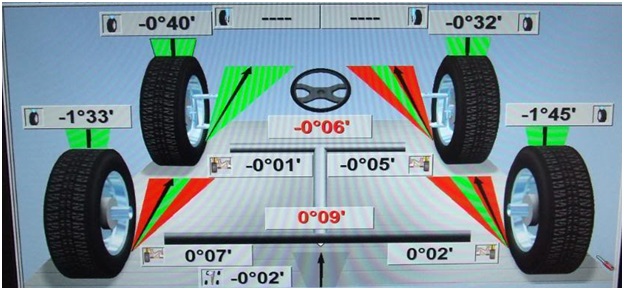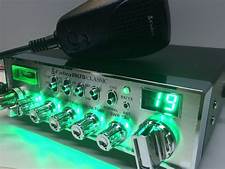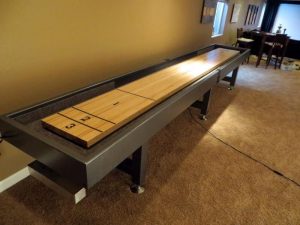Does your Car pulls to left or right ?
CAR STEERING PULLS
The car pulls to left or right? This comprises of the control framework and guiding wheel which co-exists to give a turning development of the street wheel so that the guiding wheel causes the street wheel to move. Most of the world’s vehicles comprise similar fundamental controlling parts. The first, and generally self-evident, is the controlling wheel. This is associated with the guiding framework, which interfaces with the track bar and afterward the tie poles. Lastly is the controlling arms.
The controlling framework moves the track pole from the left side and across the vehicle. The tie poles interface with ball and attachment joints to the track pole and afterward to the guiding arms. The bars empower suspension and can be changed after accomplishing diverse controlling calculations.
Car Shaking When Braking at High Speeds (13 Causes & Solutions)
SHOULDN’T SOMETHING BE SAID ABOUT THE WHEELS?
A fascinating point to note about guiding is that your front wheels don’t point a similar way when you turn your vehicle. If pointed a similar way you would wind up with a deficiency of hold and a lopsided turn. For a smooth turn, each wheel follows an alternate circle. The inward wheel follows a more modest range, making a more tight turn than the bigger sweep of the external wheel.
DOES YOUR VEHICLE PULL TO THE RIGHT OR LEFT?
As a rule, it’s a basic wheel arrangement issue. However, the car pulling hard aside can be an indication of various distinctive car issues.
POSSIBLE REASONS AND SOLUTIONS
- Wheel Alignment
This is the most probable reason for this issue. Your wheel arrangement may simply be off. It happens regularly and things just normally will likewise not be arranged over the long run. It’s a smart thought to occasionally get a wheel arrangement check for your vehicle at an assistance place and afterward have it realigned depending on the situation.
You may likewise have a force directing issue that is causing your absence of arrangement. If the vehicle truly battles while cornering, or a controlling wheel is in an off-track place, it merits getting the force directing system checked. A directing wheel pulling aside is an issue that drives you to keep up with consistent tension on the guiding wheel, to keep up with control of your vehicle. Your vehicle might feel like it has its very own psyche.

A force steer is an inclination for the vehicle to pull aside, as the motor drives the vehicle. This is normal on speed increase and results from a lopsidedness of force applied to the drive wheels. It might result from a few causes and might be intrinsic to the plan of certain vehicles. If the force steer isn’t extreme, we may scarcely see it. A gentle force steer doesn’t address an issue. For example, many people don’t take their hands off the directing wheel while speeding up and may not see the issue. At the point when the force steer is not working, it is recognized more often and we need analysis to discover the reason. Force steer can be brought about by a few variables. The most unmistakable is the inconsistent driveshaft lengths.
- Arrangement
- Force steer isn’t in every case simple to fix. Yet, there are a few stages you can take to diminish it. Legitimate tire upkeep, less forceful driving, and an assortment of execution mods would all be able to reduce force steer’s belongings.
- Tire support is the most significant and simplest thing you can do. Tires ought to be a similar size for both the front-right and front-left. All tires ought to have a great track (not worn) and be well expanded to the suggested PSI. It’s conceivable that exhausted CV joints or engine mounts can aggravate the issue.
- The advanced arrangement machines utilized by the experts are the most precise approach to gauge and change your vehicle’s arrangement.
- Wheels and Tires
At least one of your tires might be low on gaseous tension or the tire tracks could be lopsided. You may likewise have a terrible wheel bearing or free bolt that is making one of the wheels haul the vehicle lopsided.
- Check your tire pressure: Your tires ought to be properly and equally expanded before you continue.
- Tires that are not appropriately expanded may be the reason for your exhibition issues, so it’s a smart thought to take a look at this first. There won’t be a need to have to do whatever else.
- Look at your determinations. Glance in your vehicle’s maintenance manual for insights regarding the legitimate arrangement settings. You should discover numbers depicting the vehicle’s optimal toe, camber, and conceivably caster.
- Write these numbers down. However, this will be clarified. Simply ensure you interpret them precisely.
- Drive the vehicle onto a level region, lift the front end, and spot the car on jack stands. Ensure the guiding wheel is opened
- Brakes and suspension
You might have a harmed brake part, a seized-up caliper, or unevenly worn brake cushions/rotors. If you notice the setback when you are slowing down or when speeding up as you discharge the brake pedal, these are indications of the brakes being the issue.
Like the brakes, a part inside the suspension framework could be harmed or breaking down. It will make one side of the vehicle pull. Take a look at the front-end suspension. If it is free or any parts have been exhausted, this may be the reason for your issues. Like tire-pressure issues with your suspension can likewise lose your estimations, so deal with any issues here first.
- The most straightforward approach to check the suspension once the vehicle is lifted is to grasp each haggles on a level plane and in an upward direction. On the off chance that you don’t feel a lot of development, your suspension is presumably fit as a fiddle. If not, this might be the wellspring of your problem.
- If the suspension is free, you should supplant any ragged parts. This could incorporate terrible swiveling appendages, racks, bushings, gearboxes, tie pole finishes, or directing cushions.
Unless you have experience accomplishing suspension work, you will most likely have to take your vehicle to an expert repairman.
- Estimating Your Toe
Lopsided toe can cause car pull
Solutions
- Decide the appropriate toe. Toe is the sum by which the wheels are nearer (toe-in) or further separated (toe-out) at their front edges than at their back edges. Depending on your vehicle, your manual will presumably suggest either zero toes (equivalent distance between the front and back) or slight toe-in, which increments stability.
- Define a boundary. With the vehicle still up on the jack, hold a folding knife, slender piece of chalk, or white pencil against the focal point of tire tracks. Hold your hand extremely still and have an associate turn the tire one full turn, making a line around the boundary. Do likewise on the opposite side.
- If there is no region on the tire where the track is level, you might have to suspend your checking instrument with a cinch or comparative stabilizer.
- Lower the vehicle. After you bring down the vehicle to the ground, push down on the vehicle over each wheel a couple of times to permit the vehicle to settle.
- Roll the vehicle. Push the vehicle forward no less than 10 feet with the controlling wheel opened to ensure the wheels are straight.
- Stretch a string. Take a piece of string or wire and stretch it between the lines on the façade of the tires even and also with the axle. Measure the distance on the string. Rehash at the interaction at the rear of each tire. As long as you use string or wire that doesn’t extend, you can get a good precise estimation this way.
- Deduct the distinctions. On the off chance that the distance in the front is more modest than toward the back, your wheels toe-in. On the off chance that the estimation in the back is more modest, they toe-out. In case they are indistinguishable, you have zero toes.

The rear toe is likewise significant for control and tire life. It has the front and back tires lined up with each other (that is parallel). You can quantify your back toe also to the front. If your back toe is lopsided, you might have to see an expert specialist. The back toe ought to be changed before the front toe, so on the off chance that you discover an issue with the back, don’t sit around idly changing the front yourself.
- Estimating Your Camber
Excess of cross-camber can make car pulls
Solutions
- Decide the right camber. Camber is the upward point of the wheels when taking a gander at the vehicle head-on. Wheels that are nearer together at the top are considered to have a “Negative” camber, those close together at the base have a “Positive” camber. Depending on your vehicle, the manual will likely suggest slight negative camber, as this builds soundness.
- Cut an estimating triangle. Get a piece of firm cardboard or wood and cut it into an ideal right triangle (one with a 90-degree point) that is similar tallness as your wheels. Spot the triangle.
- Take your estimation. There will be a hole between your estimating gadget and your tire, presumably at the top. Measure this with a ruler or calipers. This is your camber.
- Repeat with the other front wheel. The two wheels ought to be about something similar and inside the reach indicated by your manual. If not, your camber might require an arrangement. Rehash the cycle toward the back.
- If you think the camber is off, push your vehicle ahead or in reverse enough to turn the tires a large portion of a turn, then, at that point, take a stab at estimating again.
Problems with camber, front or back, can influence how your vehicle handles. Simultaneously, nonetheless, except if your car has been in a genuine mishap, your camber will be earnestly out of alignment. If your camber should be remedied, it ought to be done before changing the toe. Camber can’t be amended at home with standard tools, and for sure, for certain vehicles, it can’t be changed at all without twisting or supplanting major parts. Unless you have insight with car fix and expert apparatuses, don’t attempt to change this yourself.
- Differential
- The differential controls the force directed to each wheel. In case it isn’t working right, the vehicle will probably pull aside or the other.
- Consistent draw
- At the point when the vehicle consistently pulls or floats aside when voyaging straight, the driver should keep up with consistent tension on the wheel to keep the vehicle out and about.
- Lopsided caster side-to-side:
- A vehicle that has the least (negative) caster can be pulled to the side by an excess cross-caster.
- Causes: Bent swagger or shaft, worn our guiding or potentially suspension parts.
- Correction: Reset the caster to vehicle specifications to decrease the cross-caster to a large portion of a degree or less and replace harmed parts.
- Back pivot steer:
- The front wheels are adjusted to vehicle determinations in any way the vehicle pulls aside.
- Causes: Directional tire pull (moved belt in the tire), a potential twisted back pivot as well as back hub misalignment.
- Correction: Check and adjust the back pivot or back toe by playing out a four-wheel arrangement.
- Brake drag:
- The force is consistent aside and may deteriorate while applying the brakes. Raise the vehicle and twist each wheel by hand to check for unnecessary drag.
- Causes: Brake caliper staying, packed brake ace chamber (doesn’t permit caliper cylinders to withdraw when brakes are delivered), misadjusted drum brakes, or stopping brakes.
- Correction: Readjust or fix slows down as required.
Best jack stands for suspension repair
Car pulling in either direction can be due to different reasons. To the type of vehicle used and the car part problems. Managing your car in all ways helps to the moment your car pulls involuntarily to the right or left.






Post Comment